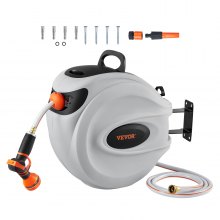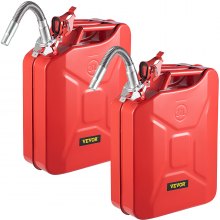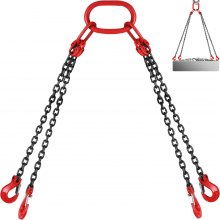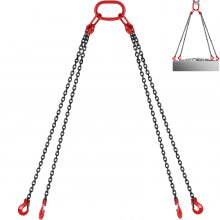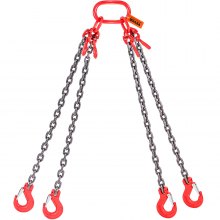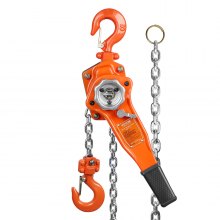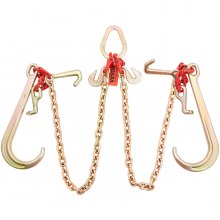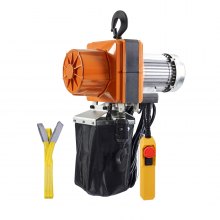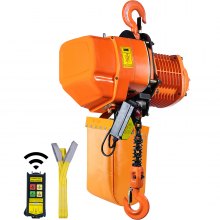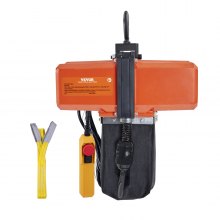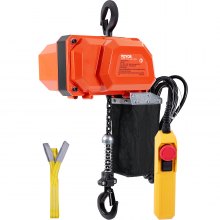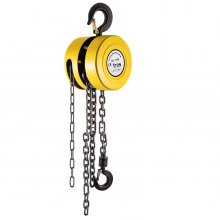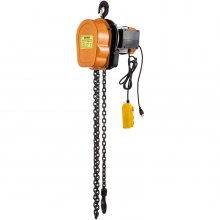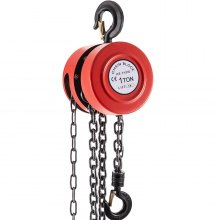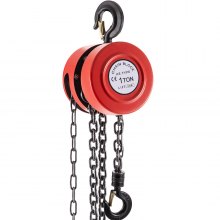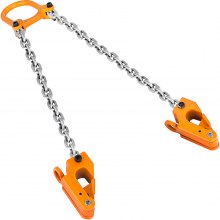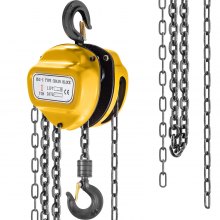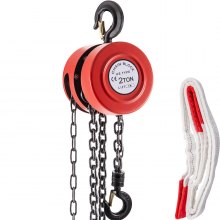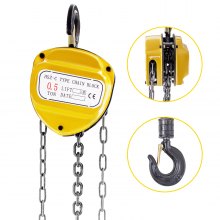Elevate Your Projects: A Guide to Choosing the Right Lifting Chains
Lifting chains are indispensable tools in various industries, from construction and manufacturing to logistics and shipping. These robust links of steel offer a reliable solution for hoisting, moving, and securing heavy loads. However, selecting the appropriate lifting chain for your project is crucial to ensure safety, efficiency, and cost-effectiveness. This guide delves into the essential aspects of lifting chains, helping you make an informed choice for your next project.
Understanding Lifting Chains
The Backbone of Heavy Lifting
Lifting chains are designed to endure the rigors of lifting heavy items. Made from high-grade steel, they provide strength and flexibility, allowing for the safe maneuvering of loads in different environments.
Types of Lifting Chains
Various types of lifting chains cater to specific needs. Alloy steel, stainless steel, and galvanized chains are among the most common, each with unique properties that suit different applications.
Key Features to Consider
Grade: The Indicator of Strength
The grade of a lifting chain determines its load-bearing capacity. Grades 80, 100, and 120 are commonly used in lifting applications, with higher numbers indicating greater strength and durability.
Size Matters
The diameter of a chain link directly affects its strength. Larger diameters offer higher load capacities, but also increase the weight and handling difficulty of the chain.
Length: Customized for Your Needs
Lifting chains come in various lengths. While longer chains provide more flexibility in application, they also require careful handling to prevent tangling and ensure load control.
Safety First: Ensuring Proper Use
Regular Inspections are Crucial
Frequent inspections can identify potential issues before they lead to accidents. Look for signs of wear, corrosion, and damage to ensure the integrity of the chain.
Understanding Load Limits
Exceeding a chain's working load limit can result in failure and accidents. Always adhere to the manufacturer's specifications for safe use.
The Importance of Proper Training
Operators should be trained in the safe use of lifting chains, including how to properly secure loads and recognize signs of wear and damage.
Applications of Lifting Chains
Construction: Building the Future
In construction, lifting chains are used to move materials like steel beams and concrete blocks, facilitating the efficient and safe construction of buildings and infrastructure.
Manufacturing: The Heart of Production
Manufacturing plants rely on lifting chains to move raw materials and finished products, ensuring a seamless production process.
Logistics: Keeping Goods Moving
Lifting chains play a vital role in logistics, allowing for the safe and efficient loading and unloading of cargo in warehouses and shipping facilities.
Choosing the Right Chain for Your Project
Assessing Your Needs
Consider the weight, shape, and sensitivity of the load, as well as the environment in which the chain will be used, to determine the most suitable type and grade of chain.
Consult with Experts
If in doubt, consult with professionals who can provide insights based on experience and knowledge of industry standards.
Maintenance and Care
Keeping Your Chains in Top Condition
Proper maintenance, including regular cleaning and lubrication, extends the life of lifting chains and ensures their reliability.
When to Replace Your Lifting Chain
Be aware of the signs that indicate a chain needs to be replaced, such as visible wear, elongation, or damage to links, to maintain safety standards.
Innovations in Lifting Chain Technology
Advancements in Materials and Design
Recent developments have led to the creation of lighter, stronger chains that offer improved performance and safety.
The Future of Lifting
Emerging technologies, including smart sensors and automated systems, are set to enhance the functionality and safety of lifting chains further.
VEVOR: Your Partner in Lifting Solutions
Why Choose VEVOR Lifting Chains
VEVOR offers a wide range of high-quality lifting chains, designed to meet the diverse needs of modern industries. With a focus on safety, durability, and performance, VEVOR is the go-to brand for professional lifting solutions.
Elevate Your Projects with Confidence
By choosing VEVOR lifting chains, you benefit from our expertise, innovative products, and commitment to customer satisfaction. Ensure the success of your projects by partnering with a leader in lifting equipment.
Take Action: Secure Your Lifting Needs Today
Make the Right Choice
Investing in the right lifting chain is crucial for the safety and efficiency of your operations. Explore VEVOR's selection to find the perfect match for your needs.
Contact Us for Expert Advice
If you're unsure about the best lifting chain for your project, our team is here to help. Contact us for personalized advice and support.
In conclusion, lifting chains are a vital component of many industrial operations, and selecting the right chain is essential for safety and efficiency. By considering the factors outlined in this guide and opting for VEVOR's reliable solutions, you can ensure that your lifting tasks are carried out smoothly and safely. Take action now to enhance your lifting capabilities and elevate your projects to new heights.
FAQs about Lifting Chains
What Are the Different Grades of Lifting Chains and How Do They Affect Performance?
The grades of lifting chains, such as 80, 100, and 120, indicate the chain's maximum strength and durability. Higher-grade chains can bear heavier loads and are more resistant to wear and fatigue. For example, Grade 80 chains are commonly used for general lifting purposes, while Grades 100 and 120 are suited for more demanding applications where higher lifting capacities and strength are required. Choosing the right grade ensures safety and efficiency in lifting operations.
How Do I Determine the Correct Size and Length of Lifting Chain for My Project?
Selecting the correct size and length of a lifting chain depends on the weight and dimensions of the load, as well as the lifting method. The chain diameter should be chosen based on the maximum load it will lift, adhering to the manufacturer's load capacity charts. The length of the chain should accommodate the lifting height and configuration, such as straight lift or basket hitch, ensuring there is enough slack to manage the load safely. Consulting with a lifting specialist or referring to standard guidelines can help in making the right choice.
How Often Should Lifting Chains Be Inspected and What Should I Look For?
Lifting chains should be inspected regularly, ideally before each use, to ensure they are in good working condition. Look for signs of wear, such as stretched or elongated links, nicks, gouges, and any form of damage or corrosion that could weaken the chain. Additionally, annual thorough inspections by a qualified professional are recommended to assess the chain's integrity and compliance with safety standards. Keeping a record of these inspections helps in monitoring the chain's condition over time.
Can Lifting Chains Be Repaired or Must They Be Replaced If Damaged?
If a lifting chain is damaged, it should be assessed by a qualified professional to determine if it can be safely repaired or if it needs to be replaced. Minor damage may sometimes be repaired under strict industry standards, but any repair must ensure the chain retains its original strength and integrity. In many cases, especially when there's significant wear or damage, replacement is the safer option to maintain lifting safety and compliance with regulations.
What Are the Best Practices for Maintaining Lifting Chains?
Maintaining lifting chains involves regular cleaning to remove dirt and debris, lubrication to ensure smooth operation and prevent corrosion, and proper storage to avoid kinks and tangles. It's also crucial to avoid exposing chains to harsh chemicals and environments that can accelerate wear. Following the manufacturer's maintenance guidelines can extend the lifespan of the chain and ensure it remains safe and reliable for lifting operations.




























